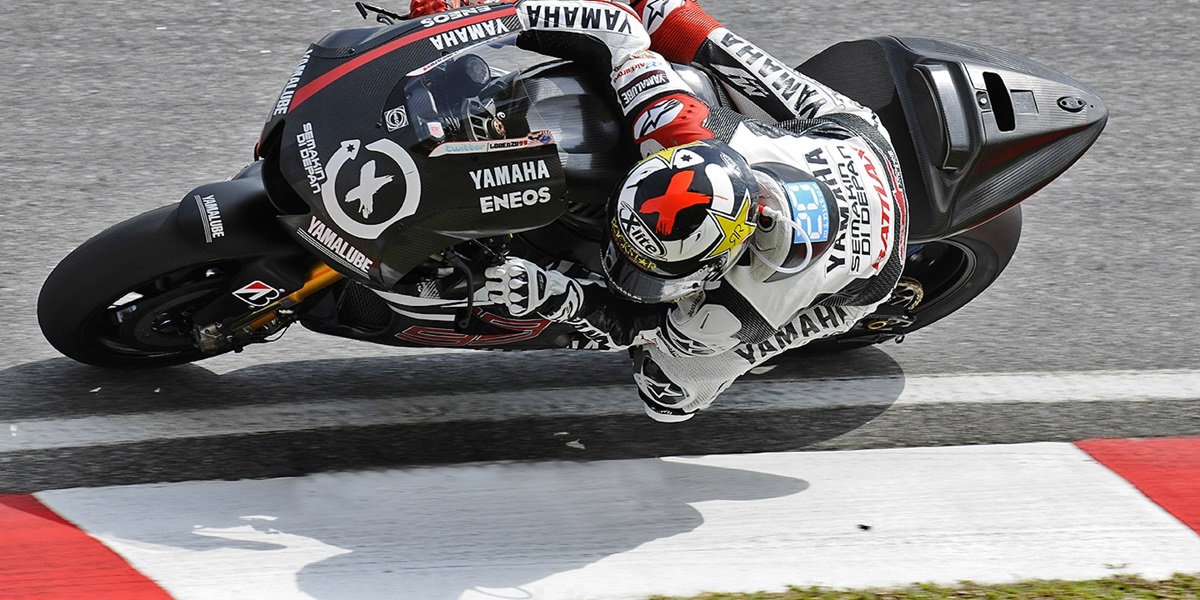
Noyes' Notebook - Crunching Numbers
March 02, 2012 | By Dennis Noyes - Speed.com
Courtesy of Speed.com
The 2012 MotoGP World Championship season is just around the corner and now, after the conclusion of a second three-day test in Sepang, we can at least start to recognize some emerging patterns. But until they actually line up alongside to race each other in Qatar, we can only base it on test results.
The teams have all run their fuel consumption simulations on the test bed and have been able to confirm (or not) these results on track in Malaysia. However, the only rider to run a full race simulation was Jorge Lorenzo on the works Yamaha (Andrea Dovizioso also attempted a simulation on the Tech3 Yamaha but did not complete it). The total of 19 consecutive flying laps put up by the 2010 World Champion can be compared with Valentino Rossi’s race winning time of 2010 at Sepang. There was no race run in 2011 because of the fatal accident that took the life of Marco Simoncelli at the beginning of the race.
If we eliminate the opening lap of Rossi’s win in 2010 in order to compare only the consecutive flying laps of Jorge on the Yamaha 1000cc (although we don't really know the exact capacity) and Valentino two years ago on the Yamaha 800cc, we see that the Spaniard’s average flying lap was done in 2:01.750 compared to Rossi’s old average of 2:02.683.
Given the same time for the standing start lap, we would see Lorenzo coming home 17.672 seconds quicker in a virtual race between the two riders on their Yamahas of different capacities.
All that really tells us is that the 1000cc Yamaha, running with a 21-liter tank can complete race distance at a pace significantly quicker than the 800 did back in 2010. And we don't really know the capacity of the tank used for testing, but assume 21 liters with no extra margin.
Because there was a red-light warning scare with Dani Pedrosa's Honda engine on the first day of testing, Honda pulled their bikes out on day two to analyze. They returned to the track on the final day, but no Honda rider did more than four consecutive laps. If it had only been Casey Stoner running short stints, it might just have been business as usual on #27’s side of the Repsol garage, but reports from Sepang indicate that there were team orders as a result of whatever went wrong with Pedrosa's engine.
Of course the time that always makes the headlines is the fastest lap. Stoner lapped in 2.00.473, just 0.175 quicker than Pedrosa, 0.329 faster than Dovizioso on the Tech3 Yamaha, and 0.404 faster than Lorenzo. Cal Crutchlow was a strong fifth just over a half second slower than Stoner and we had Alvaro Bautista (Gresini Honda) and Ben Spies (Yamaha) both less than a second back of Stoner. That’s eight bikes in the same second. (Spies was actually quicker on day two with a 2.01.285.)
But what about pace? Since Honda did not go out and do a race simulation, we can attempt to get an idea of the true pace of the rider/bike combinations by running a simple stat for the final day. We have taken the number of flying laps completed by each rider on a factory prototype and looked at the percentage of laps that each did under the 2.02 barrier.
Here goes:
1. Stoner/Honda (20 of 24) 83%
2. Lorenzo/Yamaha (33 of 44) 75%
3. Pedrosa/Honda (15 of 31) 48%
4. Bautista/Honda (14 of 40) 35%
5. Dovizioso/Yamaha (14 of 46) 30%
6. Crutchlow/Yamaha (12 of 46) 26%
7. Spies/Yamaha (3 of 20) 15%
8. Rossi/Ducati (6 of 43) 14%
9. Barberá/Ducati (4 of 51) 8%
10. Bradl/Honda (3 of 43) 7%
11. Hayden/Ducati (2 of 31) 6%.
But this is not cold, hard science either. If we look back at day two before it started to rain, we see that Spies, quickest on the day, put in five sub 2.02 laps out of his 16 flying laps in the dry (31%)
So what does it all mean? It seems to mean that only Lorenzo on the Yamaha is able to run a similar sort of pace as Stoner on the Honda, and that he did it in a full race simulation while the Australian did his laps in short stints, never longer than four consecutive laps.
What about Ducati? It was surprising to see Hector Barberá as the fastest Ducati rider, encouraging to see that Nicky Hayden was able to complete 138 laps over the three days following his recent shoulder surgery, and disappointing to see Valentino Rossi 10th, over a second back of Stoner and a tick slower than MotoGP rookie and reigning World Moto2 Champion, Stefan Bradl.
The gaps should be closer at Jerez, a shorter track with less of a 'Honda Lane' for putting down big horsepower. The next batch of changes that Rossi has requested will not be ready for either the Jerez IRTA tests or the opening round in Qatar, so it looks as if Ducati has closed the gap a bit, but not yet enough to be fully competitive.
The CRT bikes that made it to Sepang improved. American Colin Edwards on the Suter BMW was 3.2 seconds off Stoner's time and just over two seconds slower that the last of the factory bikes. The BQR Kawasaki bikes, just beginning to come to terms with electronics, were over six seconds slower than Stoner and both were running a pace that would have seen them lapped.
Where would the Aprilia-powered CRTs have been? All that will be seen when the entire grid of MotoGP bikes tests together at Jerez (March 23-25). Then the season gets underway at the wide, fast Losail circuit in Qatar…well, so long as there isn’t a war going on in the Persian Gulf by then.